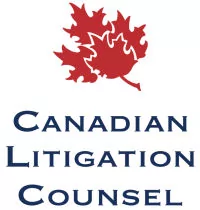Can police officers who are providing roadside assistance be found partially liable for a collision due to the positioning of their vehicle and the blinding effect of their emergency lights on oncoming traffic?
Recently, in Denhoed v Griffiths, 2023 ABKB 557, the Alberta Court of King's Bench examined these circumstances and set out the standard of care required of police officers when they respond to emergency situations on a roadway. Here, the Court found the Lethbridge Police acted reasonably and did not contribute to a third-party vehicle striking the rear of their cruiser while assisting the plaintiff during a roadside emergency.
Background
The plaintiff struck a deer at night as she was travelling westbound on Highway 3 exiting Lethbridge, Alberta. After the collision, she immediately pulled over to the right shoulder of the road, activated her hazard lights and called 911 for assistance.
A police cruiser later arrived and parked behind the plaintiff's vehicle such that left side of the cruiser slightly protruded into the right-hand lane by approximately 50 centimeters. This was meant to provide a buffer zone for the police officer when they approached the plaintiff's vehicle. All emergency lights were activated on the cruiser. This was consistent with Lethbridge Police Service policy.
The officer invited the plaintiff into the cruiser to take her statement. He did not advise her that the police cruiser positioned in this manner could be struck by a vehicle which did not move out of the right-hand lane. Both the officer and the plaintiff were seated in the front seats without their seatbelts on when a third party struck the rear of the police cruiser.
Liability was not at issue for the third party who struck the rear of the police cruiser. The issue was whether the officer and the Lethbridge Police were partially liable for the Accident due to: (1) the manner in which the police cruiser was parked, (2) taking the collision statement in the cruiser while it was parked in such a manner and (3) the blinding effects of the emergency lights on oncoming traffic.
It is notable that the third party who struck the rear of the police cruiser passed away for unrelated reasons prior to any of his evidence being adduced.
The Parties proceeded by way of summary trial which meant all evidence was tendered by way of affidavit and credibility could not be assessed. Damages were also not considered for the purposes of the summary trial.
Summary Trial
The Parties agreed the Lethbridge Police owed the plaintiff a duty of care but the issue was whether the standard of care was met. The Court stated the standard of care expected of a police officer exercising his duties is that of a reasonable police officer in similar circumstances. It was recognized that the determination of the conduct of a reasonable police officer in similar circumstances is factually driven and police officers, as professionals, are entitled to exercise discretion in the course of carrying out their investigative duties. The standard of care may be also informed by expert evidence, statute and policies and procedures.
The Court determined a "...reasonable police officer in similar circumstance (responding to and investigating a collision on a busy highway at night) would assess and take control of the scene, park the cruiser with emergency lights activated and in a manner consistent with the Traffic Safety Act, their police training and any existing protocols to mitigate the foreseeable risk of harm to persons at the scene and oncoming motorists." The purpose of emergency lights is to alert oncoming motorists of a hazard on the roadway and encourage them to slow down.
Regarding the manner in which the police cruiser was parked, the Court concluded the cruiser was parked in a manner consistent with the requirements of the Traffic Safety Act and the Lethbridge Police Service protocol, both of which informed the standard of care required of the officer. The Traffic Safety Act permits emergency vehicles to park contrary to the law (e.g. protruding into the highway) permitted it does so in a reasonable and safe manner. Here, the purpose of parking the cruiser in a manner that it intrudes into the highway is to protect the officers, the collision site and the civilians involved in the collision. The intrusion was also minimal.
The Court noted there have been other instances where emergency vehicles have been found liable for parking on the opposite side of the road from the accident and significantly intruding into the driving lane but that was not the situation present. Here, the cruiser was parked in such a manner that it only slightly intruded into the highway.
Regarding the plaintiff's last argument that the officer should not have taken the plaintiff's statement in the cruiser (thereby exposing her to the rear-end collision), the Court was unable to determine the standard of care for this issue as no evidence (expert or otherwise) had been tendered to provide guidance. Given the onus is on the plaintiff to prove their claim and that the standard of care was breached, the Court dismissed this argument.
Accordingly, the Court concluded the third party who struck the rear of the Police cruiser was 100% responsible for the collision for failing to react to emergency lights.
Key Take-Aways
Courts will refer to policies and procedures as well as statute and expert opinion when determining the standard of care. Emergency vehicles using emergency lights is reasonable when roadside hazards are present. Further, it is reasonable for an emergency vehicle to slightly intrude into the highway to protect the collision site and the individuals involved. However, the purpose should always be to protect the collision site and emergency vehicles should avoid unnecessary intrusion into the highway when possible or when it is unsafe to do so.
* * *
Brownlee LLP is a member of the Canadian Litigation Counsel, a nationwide affiliation of independent law firms .
The content of this article is intended to provide a general guide to the subject matter. Specialist advice should be sought about your specific circumstances.

